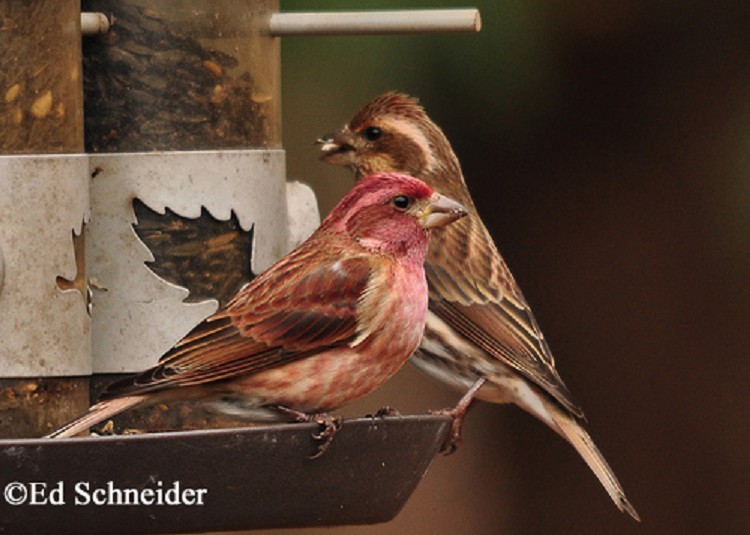Purple Finch, Haemorhous purpureus
The Purple Finch is a bird of the northern coniferous forests that visits Tennessee only in the winter. It usually arrives by mid-October and departs in late April, but their numbers vary from year to year.
It is an "irruptive" species and the variation in the number of wintering birds is thought to be associated with annual variations in the production of northern conifer cones. Purple Finches breed in the coniferous and mixed forests across Canada and the northeastern United States, south into the Appalachian Mountains and along the Pacific coast. Birds nesting in Canada migrate to the United States in winter.
Description: The male is a raspberry-red with browner wings and back, and a white belly. The female and first-year male are streaked brown and white with a bold face pattern, and a white line above the eye. The bill is stout, and the tail is notched in both male and female.
Length: 6"
Wingspan: 10"
Weight: 0.88 oz
Similar Species:
- The House Finch is slimmer with an un-notched tail. The red of the male is more orange-red than raspberry-red, and is brightest on the forehead, chest, and rump. The female House Finch is more finely streaked and lacks a distinct facial pattern. House Finches are found in Tennessee year round; where as Purple Finches only occur in winter.
Habitat: Purple Finches breed primarily in cool coniferous forests. They winter in areas where food is available in woodlands or residential areas, and frequently visit bird feeders.
Diet: Seeds, buds, blossoms, nectar, fruit of trees, and occasionally insects
Status in Tennessee: The Purple Finch is a common migrant and winter resident throughout the state. It arrives by mid-October and departs by late April. It is an "irruptive" species and is more abundant some winters than others. While Purple Finches have been observed on Roan Mountain in Tennessee during the breeding season, the closest nesting birds are in West Virginia. Rangewide the population is declining.
Fun Facts:
- The decline of the Purple Finch in the East may be partly explained by competition with the introduced House Finch. In aggressive interactions, the House Finch nearly always wins. A population decline was also noted 100 years earlier when the House Sparrow was first introduced.
Best places to see in Tennessee: Purple Finches frequently visit bird feeders rangewide, but can be found in forests statewide in winter.
For more information:
